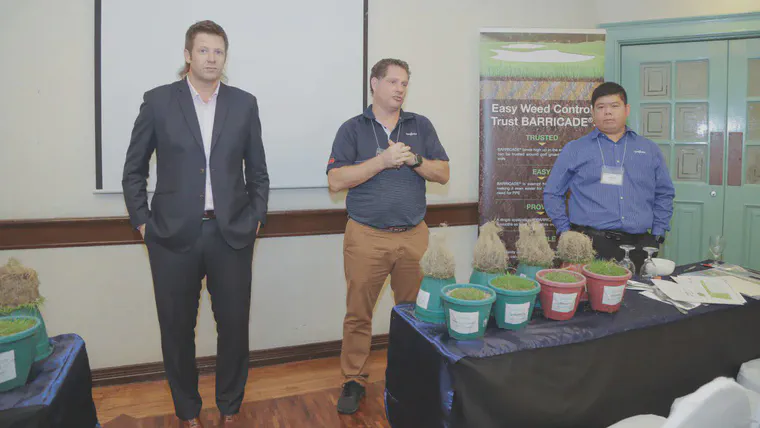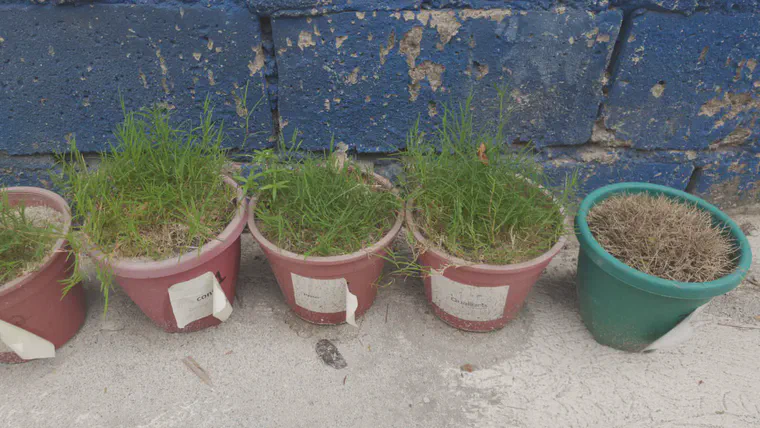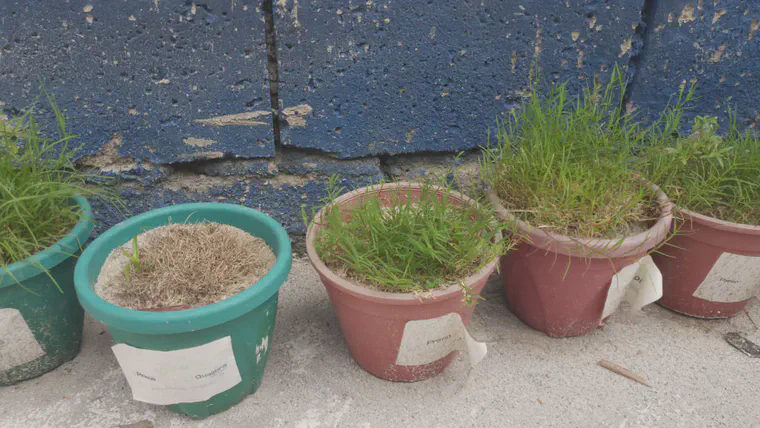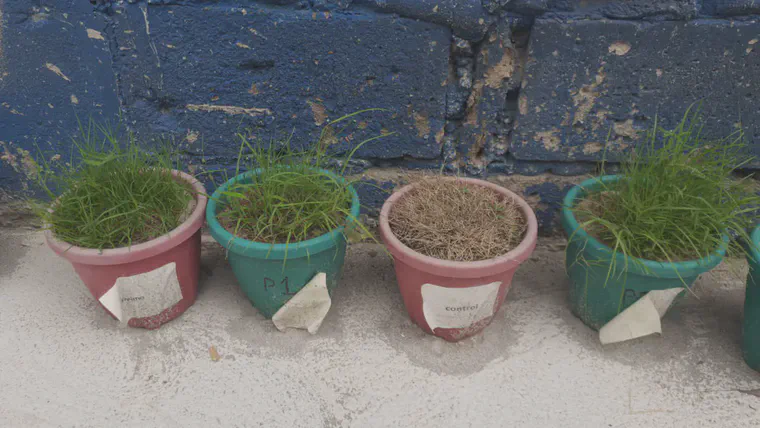Can you spot the grass that did not get enough water?
One of the most interesting articles I read last year was Drought responses of above-ground and below-ground characteristics in warm-season turfgrass by Zhang et al. That article describes the drought response after 3 weeks with irrigation withheld:
Despite a few rain events … , extensive drought stress developed in most of the species except for common bermudagrass. At the end of dry down, Japanese lawngrass and manilagrass completely entered dormancy with turfgrass quality ratings less than 2 [on a scale from 1 to 9] … But the turfgrass quality of common bermudagrass was 5.6 and had minimal leaf firing.
Steve Wilson indavertently did the same kind of experiment with grasses he’d grown in pots for a November 20 seminar last year that included a demonstration of Primo Maxx and Qualibra effects on the grasses.

The grasses used were manilagrass (‘Zeon’), bermudagrass (‘Tifway’), and seashore paspalum (‘Salam’). At the seminar, all the grasses looked good, and manilagrass looked the best. That’s no surprise. This species is well-adapted to this climate, and one can find it as a fine turfgrass all over East and Southeast Asia.
So with this background knowledge about the grasses, when Steve sent me a series of images of these same grass pots taken on January 10, with a note that “the pots have been left in the warehouse yard since early Dec. Just rainfall, no other water,” I correctly identified the Zeon, Tifway, and Salam.



This striking differential response between the species in response to reduced water supply is one of the four reasons I think zoysia should be a poor choice for California.